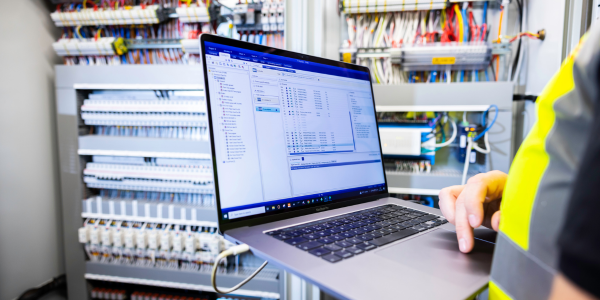With next month (October) being Cybersecurity Awareness Month, it’s the perfect time to assess the vulnerabilities of your BMS and explore how your BMS security can be improved.
Following the COVID19 pandemic, cybersecurity has never been more important, with more people working from home and using BMS systems and IT networks remotely.
No matter the size of an organisation, hackers are increasingly looking for ways to target these systems, for a variety of criminal reasons – either to hold the company to ransom for a financial reward, to get access to other parts of a company’s wider IT network, to carry a malicious attack (perhaps by a former employee or business competitor), or simply because they can.
You may think that gaining access to your company’s Building Management System might not be massively detrimental – after all, how much damage can be done? The problem is, however, that unscrupulous individuals can use it as a doorway to gain access to more confidential areas of the IT system, such as the places where personal data files or financial information is stored.
As building management systems have become increasingly more complex, to deal with the IoT demands of a modern-day society, this interconnectedness has made them more vulnerable to cyber-attacks. And the problem lies less with the system that is in place, but more the way it is installed, maintained, updated and managed.
Cybersecurity threats posed
It’s vital that there are tough security measures in place to protect your BMS from some of the most common cybersecurity threats to a building management system, which include:
- Malware – software specifically designed to damage or disable a computer system, such as viruses, worms and spyware.
- Ransomware – A type of malware that requires a financial ransom be paid in order to get your system back online.
- Denial of Service (DoS) attacks – these aim to overload a system with requests so that it can no longer function properly.
- Data breaches – unauthorised access to potentially sensitive or confidential company files.
- Cyber fraud, such as phishing
In the same way that you would protect your PC using antivirus software, it’s essential to have a reliable security structure that can protect your building management system from vulnerabilities.
In addition to seeking help and advice from the experts, there are a few things you can do yourself to improve cybersecurity within your organisation.
KEEP YOUR SYSTEM UP TO DATE
This includes software, firmware, and drivers for all devices that are connected to your building management system.
USE STRONG PASSWORDS
Include a mix of letters, numbers, and special characters for ultimate protection.
CAREFULLY MANAGE BMS ACCESS
While the BMS itself may not be the main target of a cyber attacker, having access to the BMS can offer a way into the system which the attacker is trying to access. Closely and regularly monitor who has access.
USE A FIREWALL
An additional layer of security which also comes with the ability to monitor and control the traffic going in and out of your network.
Stay cybersecurity aware
The fact remains that the best way to have a building management system which is completely secure, is to have it designed, installed, maintained and managed by an expert who is fully aware of the potential cyber-crime pitfalls of using a BMS.
The experts at Cube Controls can support you at all stages of design and consultancy, installation and modification and maintenance of your building management system. We can also explore the additional security features available and ways to increase energy efficiency, where required.
This Cybersecurity Awareness Month, why don’t you look into ways to protect your buildings and the companies operating within them with a sensible and well-informed approach to cybersecurity? Speak to a member of the team today to find out more.




